BY JULIAN RYALL
Japan Correspondent
PELELIU, Palau —The bustle of shifting equipment and siting a tent comes to a halt and silence descends on the clearing hacked from the jungle. The leader of the Japanese teams calls out “rei” and the half-dozen Japanese and their local guides and excavators bow. They hold the position for an extended time over what is, to the Japanese, hallowed ground.
Roughly 50 meters across, Japanese researchers have been seeking this patch of otherwise unremarkable land in the central part of Peleliu, one of the most southerly islands of Palau, for more than a decade. It is here, U.S. records indicate, that the remains of 1,086 Japanese servicemen killed in some of the fiercest fighting in the entire Pacific theater were interred in a mass grave even while the battle to secure the island continued.
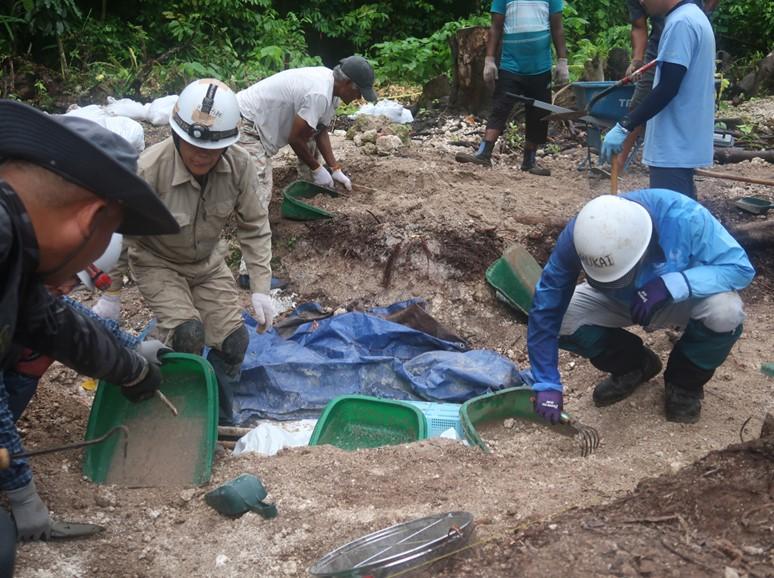
The location of the grave was only identified in 2023, with work to clear the area and start the delicate, painstaking task of uncovering and then removing individual soldiers’ remains beginning this year.
The mission is being overseen by the Japan Association for the Recovery and Repatriation of War Casualties, which is affiliated with the Ministry of Health, Labor and Welfare and tasked with locating as many of the 1.12 million soldiers, sailors and airmen still listed as missing in World War II. Their remit ranges from the Aleutian Islands of Alaska to the Indo-Myanmar border and Guadalcanal in the Solomons to former prisoner-of-war camps in the tundra of Siberia.
Hundreds of the missing are on Peleliu, where more than 10,000 Japanese troops died as they attempted to halt the U.S. invasion. A handful were captured, while 34 men hid in the dense jungle until April 1947, unaware that Japan had surrendered 20 months earlier. The invasion of this 13-square-km island in Operation Stalemate II, which began with a seaborne landing on the west coast on Sept. 15, 1944, also cost the U.S. 2,143 dead and 8,514 wounded.
“There are many families in Japan who are still hoping that their missing relatives will be able to return home,” said Hiroshi Sato, executive director of the Tokyo-based JARRWC. “Many years have passed and so we want to do this as quickly as possible.”
The organization carries out research in national archives and other institutions in Japan and abroad. Equipped with new information, field teams travel to battle sites to speak with government officials and local residents who can share their knowledge. Once they have a clearer understanding of the site, teams of recovery experts start excavating the site, carefully mapping and preserving bones and other personal items that might help to identify the victim – coins, a belt buckle or button — as they are recovered.
Eighty years of soil and debris are removed from the bones and artefacts and, where possible, skeletal remains are reconstituted. Any DNA samples that can be recovered are compared to a database of family members seeking a missing relative, although Sato admits that it is becoming increasingly challenging to find matches.
When a match is confirmed, the remains are returned to the family. The vast majority, however, are cremated and interred at Chidorigafuchi National Cemetery in Tokyo.
In 2023, JARRWC teams located the remains of around 3,000 military personnel, although some remain in situ until they can be recovered and repatriated. “When we are able to return remains to a family, the response is the same; they are very happy, very grateful,” Sato said.
The fighting on Peleliu was bitter, with the well dug-in defenders putting up a far more resolute resistance than the U.S. had anticipated. Originally, U.S. planners believed it would take no more than four days to subjugate the defenders. In reality, from the opening salvoes of U.S. warships off the coast, it took nine weeks and five days before Peleliu was secured.
Immediately after fiercely resisted landings, the U.S. invasion force was faced by defenders in bunkers excavated into the limestone, hardened positions that could withstand all but a direct hit from a shell from a battleship, a network of fortified caves and jungle and terrain that favored the Japanese.

There are accounts of soldiers on both sides running out of ammunition and fighting hand to hand. Hundreds fell victim to the heat and humidity of the jungle. When the Japanese could not be forced from their positions, U.S. troops fired flamethrowers into the tunnels. Elsewhere, armored bulldozers were called up to simply bury defensive positions, including their occupants.
A key defensive position was the series of elevated limestone ridges known to the Americans as Bloody Nose Ridge. Today, a rusted Japanese howitzer still sits in a cave aiming to the south. Nearby is a U.S. amphibious vehicle. Not far away is the suspected mass grave.
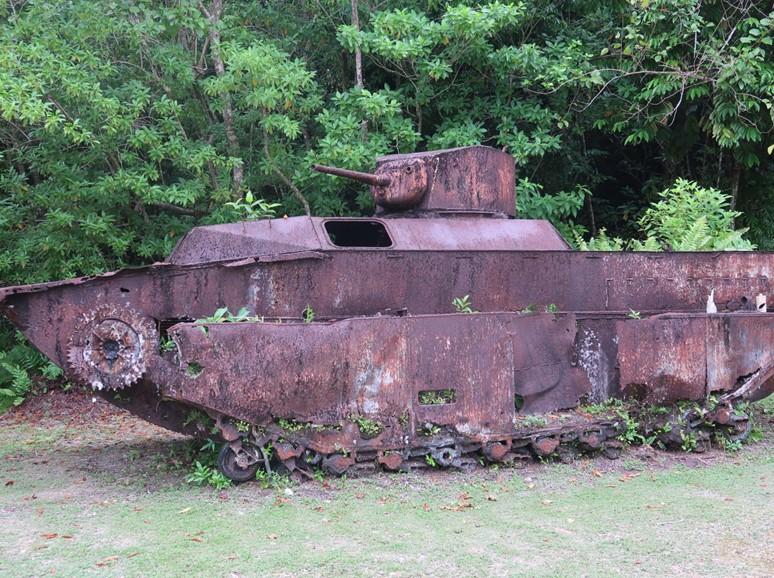
A series of test pits have been dug within the rough circle marked out by yellow police tape, with a team of Japanese volunteers and local laborers focusing their attentions on a new excavation. Long metal poles are all that remain of the stretchers that were used to bring the dead Japanese soldiers to this spot. The canvas of the stretchers is long gone, but the bodies they carried still remain.
Delicately, a Japanese volunteer removes the larger limestone blocks from around the skull. He uses a paint brush to clear the finer gravel and sand, moving on to the spine, arms, pelvis and, gradually, the legs. Just centimeters away, another body is emerging, with the skull again prominent and enabling the recovery team to locate the rest of his body.
Digging by hand, the recovery team has located numerous voids in the soil caused by corpses decomposing within the compacted limestone. Each one will be investigated, with the bones carefully mapped before they are placed in plastic boxes to be identified, hopefully.
Sunao Ichihara is one of the Japanese team helping to scour the jungles and mangrove swamps of Peleliu to recover former servicemen. A retired colonel who served 38 years in the Air Self-Defense Force, 76-year-old Ichihara said he had been inspired to volunteer after reading a book written by a Japanese soldier who had been badly injured fighting on nearby Angaur Island but was helped by a U.S. soldier.
“About 10,000 Japanese soldiers died on Peleliu, and every one of them had families who have since wondered what happened to their son, their brother, their husband,” he said. “I want to help them bring their loved-one's home.
“And I recognize that if I had been born a few years earlier, then I would almost certainly have been a pilot fighting this war.” mbj
Editor’s note: Julian Ryall was in Peleliu on various dates with the JARRWC in September.
Japan mission seeks wartime remains on Palau island
Recommended Articles...
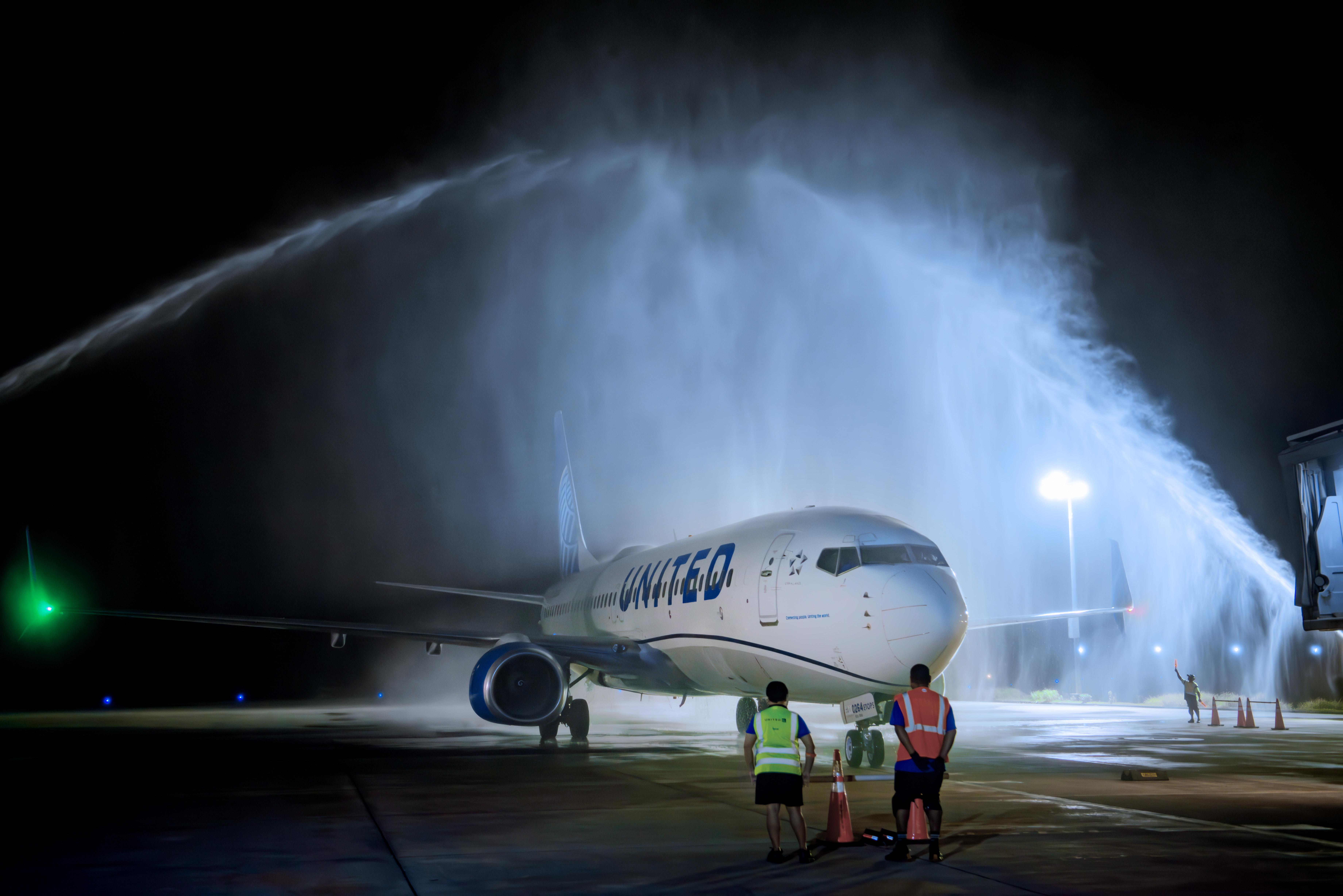
Palau welcomes new United Airlines flight from Narita
AIRAI, Palau — Cheers and greetings met more than 100 visitors at Palau International Airport for the arrival of United Airlines Flight 143, the new nonstop Narita-Palau service. The inaugural flight, which landed at about 10:40 p.m. on Oct. 29, had been long-awaited.
Read More 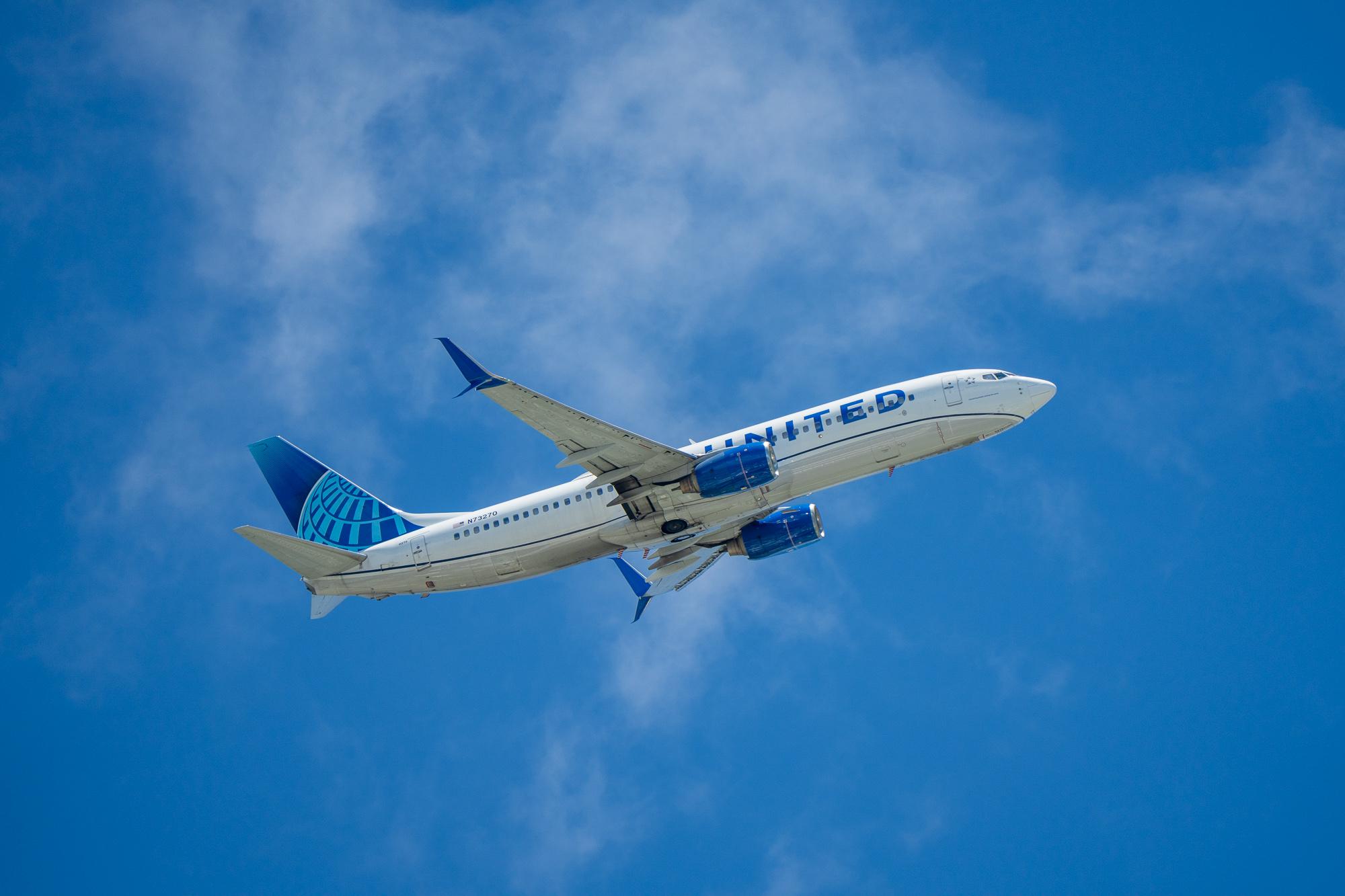
United executive says hotel renovations more important than destination flight incentives; new planes in 2026
Speaking at the Pacific Asia Travel Association’s Micronesia Chapter’s membership meeting on Oct. 21 in Yap, Anthony Falvo, senior manager for Pacific Network Planning for United Airlines, said incentives for airlines for a new route are not uncommon.
Read More 
GVB takes part in Tourism Expo Japan 2025 in Nagoya
NAGOYA, Japan — Japanese travelers are rediscovering Guam as a vacation destination, with arrivals from Japan in the January-July first half of the year out-performing the average growth from all markets.
Read More 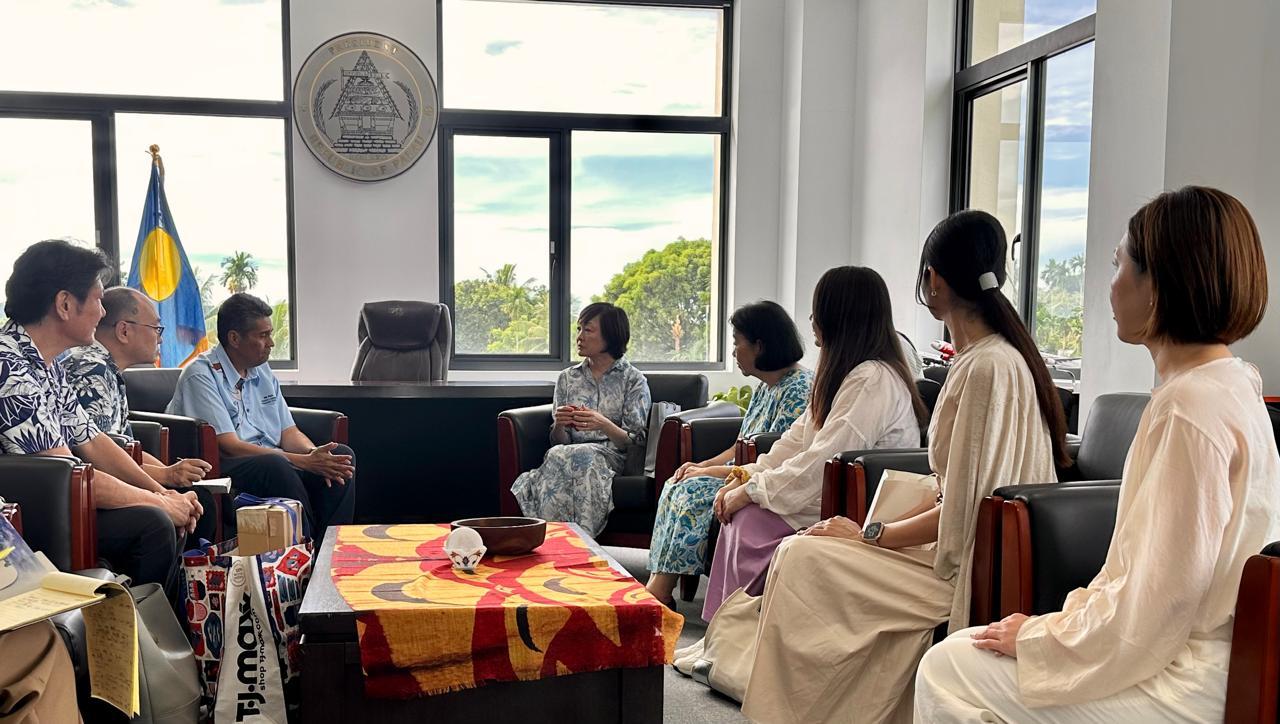
Akie Abe, widow of former Japan Prime Minister Abe, visits Palau
Former First Lady of Japan, Akie Abe, widow of the late Prime Minister Shinzo Abe, is visiting Palau. While there, she met with President Surangel S. Whipps, Jr. and First Lady Valerie R. Whipps on Sept. 18.
Read More 














